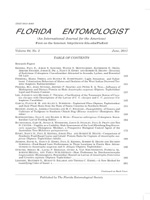Nine field collected populations of Panonychus citri from Chinese citrus orchards were assayed for susceptibility to pyridaben and the alternative acaricide azocyclotin and activity of glutathione S-transferases (GSTs). The results showed that populations from Pujiang, Wanzhou, and Pengshan exhibited a low level of sensitivity to pyridaben, but demonstrated a high level of sensitivity to azocyclotin. The correlation coefficient between GSTs activities and the LC50 of pyridaben was r = 0.93 while the correlation coefficient between GSTs activities and the LC50 of azocyclotin was r = 0.03. The Vmax value of CDNB (1-chloro-2, 4-dinitrobenzene) in populations from Beibei, Jintang, Pengshan, Wanzhou, and Zhongxian exhibited a: 2.5-, 11.6-, 7.0-, 5.1-, and 6.4-fold increase in resistance, respectively, relative to the pyridaben susceptible population. In addition, azocyclotin was the most sensitive inhibitor of the GSTs compared with the EA (ethacrynic acid) and pyridaben, based on the values for I50. The current study suggested that GSTs might be involved in resistance of P. citri to pyridaben and but not azocyclotin in the field.
How to translate text using browser tools
1 June 2011
Susceptibility and Activity of Glutathione S-Transferases in Nine Field Populations of Panonychus citri (Acari: Tetranychidae) to Pyridaben and Azocyclotin
Jin-Zhi Niu,
Guo-Ying Liu,
Wei Dou,
Jin-Jun Wang

Florida Entomologist
Vol. 94 • No. 2
June 2011
Vol. 94 • No. 2
June 2011
azocyclotin
citrus red mite
glutathione S-transferases
pyridaben
resistance




